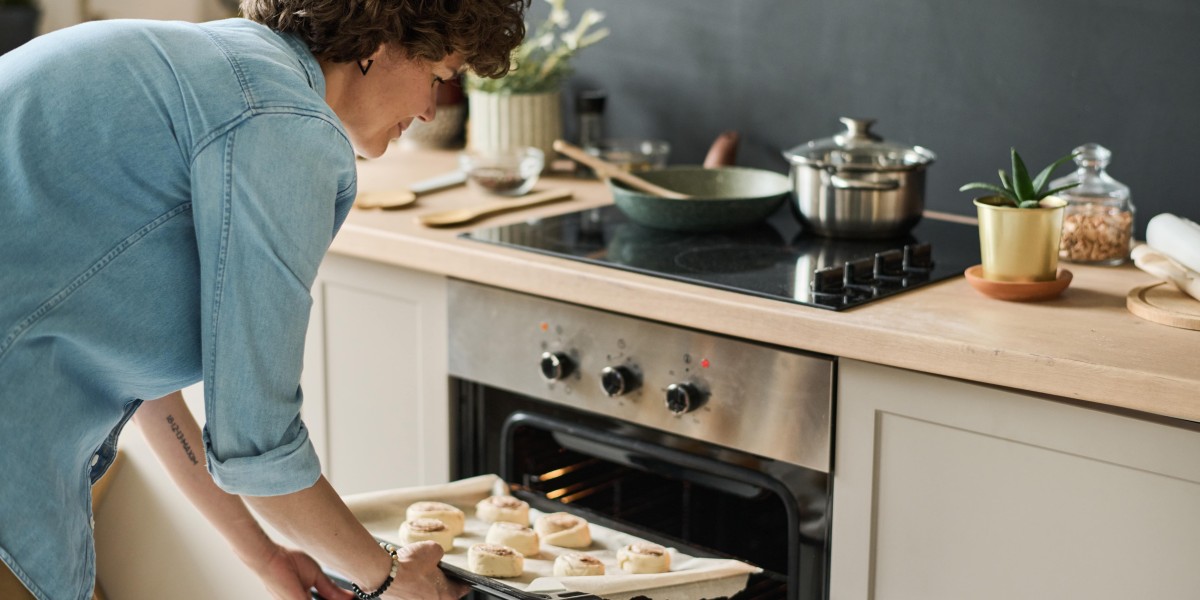Understanding Built-in Ovens and Hobs: The Perfect Kitchen Combination
As modern kitchens progress, built-in appliances are becoming significantly popular for both performance and looks. Among these appliances, built-in ovens and hobs stick out as important elements for any culinary lover or home cook. This post checks out the benefits, features, and factors to consider surrounding built-in ovens and hobs. It also attends to typical concerns, using a detailed guide to these kitchen essentials.
What are Built-in Ovens and Hobs?
Built-in ovens are integrated into kitchen cabinets, producing a sleek, seamless appearance. They come in various types, including standard, convection, and steam ovens, each accommodating different cooking approaches. Hobs, on the other hand, are the cooking surface areas that incorporate with the kitchen counter top. They can be gas, electric, or induction, permitting cooks to choose based upon their cooking style and energy preference.
Advantages of Built-in Ovens and Hobs
- Space-Saving: Built-in models maximize kitchen space by eliminating the need for freestanding units, producing an open and airy environment.
- Visual Appeal: Their streamlined design adds to a contemporary, structured appearance in the kitchen.
- Improved Functionality: Built-in ovens typically include innovative cooking innovation, using a variety of functions like self-cleaning and smart controls.
- Modification: Manufacturers use a range of finishes and styles, enabling house owners to tailor their appliances to match their kitchen design.
Kinds Of Built-in Ovens
1. Traditional Ovens
Conventional ovens use radiant heat from the bottom and can be ideal for baking.
2. Convection Ovens
Convection ovens have a fan that circulates hot air, ensuring even cooking. They decrease cooking time and are best for roasting meats or veggies.
3. Steam Ovens
Steam ovens utilize wet heat to prepare food, preserving nutrients and flavors. They are ending up being significantly popular amongst health-conscious cooks.
4. Microwave Ovens
These ovens supply quick heating and cooking and serve numerous functions, from reheating leftovers to baking.
Kinds of Hobs
1. Gas Hobs
Gas hobs utilize natural gas or lp for cooking. They provide immediate heat control, making them a preferred amongst expert chefs.
2. Electric Hobs
Electric hobs have solid or ceramic surfaces that warm up through electric coils. They are easy to tidy but may take longer to heat than gas designs.
3. Induction Hobs
Induction hobs utilize electro-magnetic energy to straight heat pots and pans, using quick heating and energy efficiency. They cool down quickly and provide a more secure cooking experience.
Elements to Consider When Choosing Built-in Ovens and Hobs
When choosing built-in ovens and hobs, several aspects ought to be thought about:
1. Space Limitations
Step the readily available space in your kitchen to ensure that the appliances will fit flawlessly into the cabinetry.
2. Cooking Style
Consider your cooking routines. If you often bake, a convection oven may be perfect. On the other hand, induction hobs are fantastic for safety and efficiency.
3. Budget
Rates varies significantly based on functions and brands. Setting a budget plan helps limit the choices.
4. Energy Source
Figure out whether you desire gas or electric appliances. This choice can affect cooking performance and utility expenses.
5. Visual appeals
Select surfaces and styles that match your kitchen's design. Stainless-steel is a popular choice for a modern appeal.
Contrast of Built-in Ovens and Hobs
| Function | Built-in Oven | Built-in Hob |
|---|---|---|
| Type | Convection, steam, etc. | Gas, electric, induction |
| Cooking Versatility | High | Moderate to high |
| Cleaning up Ease | Differs by design | Typically simple to clean |
| Installation Style | Integrated in kitchen cabinetry | Flush with countertop |
| Energy Efficiency | Differs by model | Induction generally most efficient |
FAQs About Built-in Ovens and Hobs
1. Are built-in ovens more expensive than freestanding models?
Yes, built-in ovens usually feature a greater price due to their design and installation requirements. Nevertheless, they frequently use more advanced functions.
2. Can I replace my existing freestanding oven with a built-in model?
Yes, it's possible to replace a freestanding oven with a built-in design, however you might require to make modifications to your cabinets and kitchen layout.
3. What upkeep do built-in ovens and hobs require?
Routine cleaning is vital. Lots of built-in ovens included self-cleaning functions. It's likewise important to keep the hobs without spills and grease.
4. Are induction hobs safe for families?
Induction hobs are thought about safer than gas or electric options since they only heat up the pots and pans, minimizing the threat of burns or accidents.
5. How can I take full advantage of the effectiveness of my built-in oven and hob?
To take full advantage of effectiveness, constantly preheat the oven when needed, utilize the appropriate size pots or pans on the hob, and think about utilizing the recurring heat from your hob after cooking.
Built-In Oven And Hob, Https://Simple01.Netpro.Co.Kr:443/Bbs/Board.Php?Bo_Table=Free&Wr_Id=69, ovens and hobs supply numerous advantages, making them popular choices for modern kitchens. Their space-saving designs, advanced functions, and aesthetic appeal add to their high need. By thinking about factors like space, cooking style, and budget plan, property owners can pick the ideal combination of appliances that best suit their cooking requirements. Whether through gas, electric, or induction hobs, and a range of oven types, the ideal built-in kitchen appliances can improve the cooking experience while elevating the overall visual of the kitchen.








